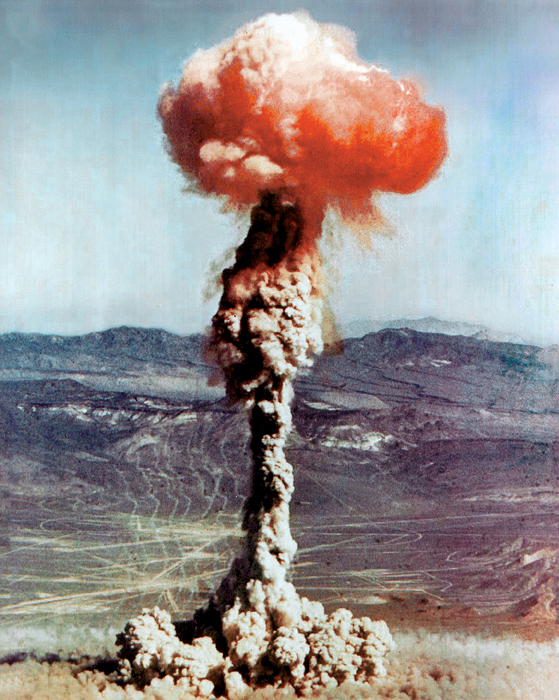- Treaty of Tlatelolco
Infobox Treaty
name = Treaty of Tlatelolco
long_name = Treaty for the Prohibition of Nuclear Weapons in Latin America and the Caribbean

image_width = 200px
caption = 14kiloton atomic explosion,Nevada Test Site , USA.
type =
date_drafted =
date_signed =14 February ,1967
location_signed =Mexico City
date_sealed =
date_effective =25 April ,1969
condition_effective = Deposit of ratifications (Art. 29)
date_expiration =
signatories =
parties = 33
depositor =
language =
languages =
website =
wikisource =The Treaty of Tlatelolco is the conventional name given to the Treaty for the Prohibition of Nuclear Weapons in Latin America and the Caribbean. It is embodied in theOPANAL (el Organismo para la Proscripción de las Armas Nucleares en la América Latina y el Caribe, which is Spanish for the Agency for the Prohibition of Nuclear Weapons in Latin America and the Caribbean). Meeting in theTlatelolco district ofMexico City on14 February 1967 , the nations ofLatin America and theCaribbean drafted this treaty to keep their region of the world free ofnuclear weapon s.WhereasAntarctica had earlier been declared a nuclear-weapon-free zone under the1961 Antarctic Treaty, this was the first time such a ban was put in place over such a vast, populated area.The treaty came into force on
25 April 1969 , and has since been signed and ratified by all 33 nations of Latin America and the Caribbean. (Cuba was the last country to ratify, on23 October 2002 .) Under the treaty, the states' parties agree to prohibit and prevent the "testing, use, manufacture, production or acquisition by any means whatsoever of any nuclear weapons" and the "receipt, storage, installation, deployment and any form of possession of any nuclear weapons."There are two additional protocols to the treaty: Protocol I binds those overseas countries with territories in the region (the
United States , theUnited Kingdom ,France , and theNetherlands ) to the terms of the treaty. Protocol II requires the world's declared nuclear weapons states to refrain from undermining in any way the nuclear-free status of the region; it has been signed and ratified by the USA, the UK, France,China , andRussia .The treaty also provides for a comprehensive control and verification mechanism, overseen by the Agency for the Prohibition of Nuclear Weapons in Latin America and the Caribbean (OPANAL), based in Mexico City.
Alfonso García Robles andAlva Myrdal received theNobel Peace Prize in 1982 for their efforts in promoting the treaty.ee also
*Antarctic Treaty (1959): Antarctic nuclear-free zone
*Treaty of Rarotonga (1985): South Pacific nuclear-free zone
*Treaty of Bangkok (1995): Southeast Asia nuclear-free zone
*Treaty of Pelindaba (1996): African nuclear-free zone
*Treaty of Semipalatinsk (2006): Central Asian nuclear-free zoneExternal links
* [http://www.opanal.org/opanal/Tlatelolco/Tlatelolco-i.htm Treaty text]
* [http://www.opanal.org/index-i.html OPANAL website]
Wikimedia Foundation. 2010.
